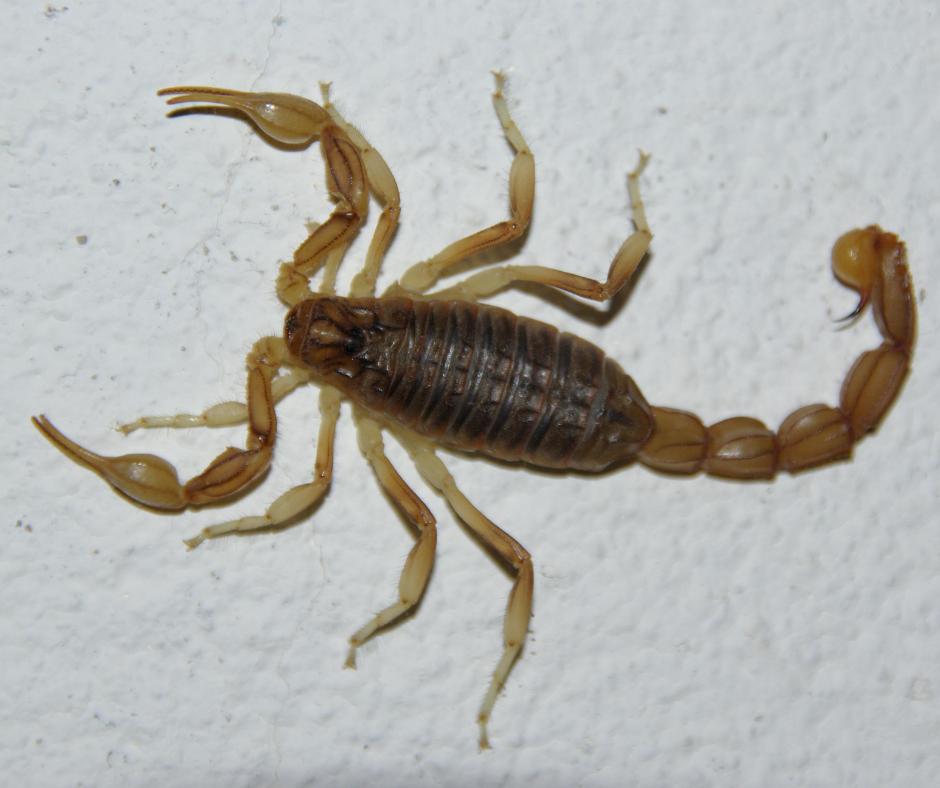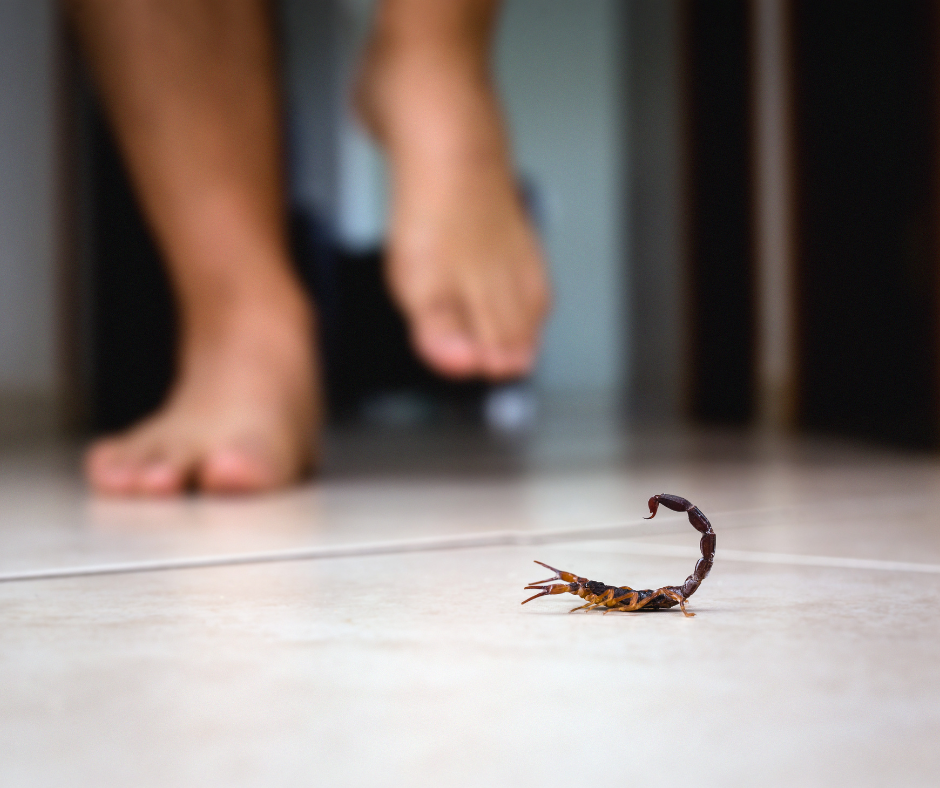Identify & Learn More About Scorpions
Moderate Risk

Venomous arachnids that deliver painful stings and seek shelter in dark, dry spaces throughout your property
Call Athena Pest Control Immediately if:
You or family members have been stung by a scorpion
You see scorpions glowing under UV light around your property
You find shed scorpion exoskeletons in closets or storage areas
You discover scorpions in bedrooms, bathrooms, or children's play areas
Common Species
Striped Bark Scorpions
Yellowish-tan with dark stripes, most common in Alabama
Southern Devil Scorpions
Smaller, darker brown, less common but more aggressive
Hentz Striped Scorpions
Light colored with distinct striping patterns
Florida Bark Scorpions
Occasionally found in southern Alabama counties
Where You'll Find Scorpions
Under rocks, woodpiles, debris, in mulch beds, around foundations, beneath outdoor furniture
Closets, basements, attics, bathrooms, behind appliances, in storage boxes, dark corners
Shed exoskeletons, UV fluorescence at night, small prey remains, scratching sounds in walls
Shoes and clothing, bed linens, towels, cardboard boxes, cracks in walls, around plumbing
Scorpion Prevention Tips
Use dehumidifiers, fix water leaks promptly, ensure proper ventilation in bathrooms and kitchens
Use dehumidifiers, fix water leaks, ensure proper drainage, eliminate standing water sources
Caulk entry points, install fine mesh screens, seal gaps around utilities, weather-strip doors
Shake out clothing before wearing, check shoes before putting on, use yellow lighting outdoors
Health & Property Risks
Painful Stings
Immediate burning pain, swelling, numbness lasting 24-48 hours
Allergic Reactions
Some individuals experience severe reactions requiring medical attention
Secondary Infections
Scratching sting sites can lead to bacterial infections
Anxiety Impact
Fear of stings affects quality of life and sleep patterns
Pet Safety
Dogs and cats can be stung, potentially causing serious reactions
Seasonal Activity
Scorpions are most active during warm months but can be found year-round indoors:
Jan
Feb
Mar
Apr
May
Jun
Jul
Aug
Sep
Oct
Nov
Dec
Peak Season
April through October when temperatures are optimal for hunting and reproduction
Treatment Difficulty
DIY Effectiveness: ⭐⭐ (Low) – Store-bought sprays provide temporary relief but don’t address harborage areas
Why Professional Treatment is Essential: Scorpions require specialized UV detection equipment to locate hiding spots, targeted residual treatments that remain effective long-term, and comprehensive exclusion work to prevent re-entry. Professional treatments use products specifically designed for arachnids.
Expected Timeline: 2-4 weeks for population control, with quarterly maintenance recommended
Scorpion Myth Busters
Myth: All scorpions are deadly
Truth: Alabama scorpions cause painful but rarely life-threatening stings
Myth: Scorpions are aggressive and chase people
Truth: Scorpions are defensive and only sting when threatened or accidentally contacted
Myth: Scorpions can’t climb smooth surfaces
Truth: Scorpions are excellent climbers and can scale glass and metal surfaces



